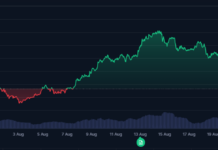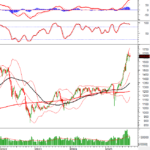On September 18th, the An Hoa Residential Area project officially broke ground. Spanning 9.3 hectares within the Hung Vuong Square planning area (Dao Thanh Ward, Dong Thap Province), this development marks a significant milestone in the region’s urban expansion.
With a total investment exceeding 2 trillion VND, the project is jointly developed by Him Lam Corporation and Thuan Phu LLC. The master plan includes 242 townhouses ranging from 90 to 200 square meters, alongside two 15-story social housing blocks covering over 25,000 square meters. These will provide nearly 400 apartments tailored for workers and middle-income families, accommodating an estimated population of 3,000 upon completion.
Sustainability is a cornerstone of the design, with 49% of the land allocated for transportation infrastructure and 9% dedicated to green spaces, parks, and advanced wastewater treatment systems.
An Hoa Residential Area is poised to redefine modern urban living, seamlessly integrating residential, commercial, and community amenities into a cohesive ecosystem.

Project site of An Hoa Residential Area (Source: Dong Thap Newspaper)
Dong Thap provincial leaders have pledged full support to ensure the project’s success, urging developers and contractors to prioritize quality and adhere to timelines.
According to the Dong Thap Department of Construction, the province aims to deliver 13,900 social housing units between 2025-2030, including 6,100 in former Dong Thap and 7,800 in former Tien Giang. By 2025, 1,474 units are slated for completion.
Him Lam Corporation, established in 1994, stands as a pillar of Vietnam’s real estate sector. Their portfolio boasts 80 projects nationwide, including Him Lam Tan Hung New Urban Area (Ho Chi Minh City), Him Lam Green Park (Bac Ninh), and the Duc Hoa III – Slico Industrial Park (formerly in Long An, now Tay Ninh).
In Hanoi, Him Lam has made waves with its social housing initiatives. Notably, the Him Lam Thu Do – BIC Vietnam consortium is developing the Thuong Thanh Social Housing project (branded as Rice City Long Chau) in the former Long Bien District.
In June 2025, the consortium unveiled details of Rice City Long Chau, with unit prices peaking at 26-27 million VND/m²—an unprecedented benchmark for Hanoi’s social housing market. Previously, the record was held by the N01 Ha Dinh project (former Thanh Tri District) at 25 million VND/m².
At 27 million VND/m², the smallest units (32 m²) start at approximately 864 million VND, while the largest (77 m²) reach 2.08 billion VND. Despite the premium pricing, demand has been extraordinary. Over two months, the former Long Bien Land Registration Office processed hundreds of applications daily, with thousands of eligibility checks submitted. The project website recorded over 75,000 visits, including 200-300 concurrent users—a record for social housing projects.
Rice City Long Chau comprises three towers (CT1, CT2, CT3) totaling 1,980 units.
Buyers at major projects by Vingroup, FLC, Bitexco, Sunshine in Hanoi: Note this update
Several developments from leading firms have been approved for sale in the latest regulatory update.
Accelerating Post-Merger Growth: Khánh Hòa Seeks Bold Projects to Elevate Its Status as a Global Coastal Metropolis
Khánh Hòa, following its consolidation, continues to emerge as a captivating destination on the investment map. New directives from the central government, coupled with groundbreaking policies and special mechanisms, are unlocking unprecedented opportunities. This vibrant region is now poised to attract global “eagles” and mega-projects of exceptional caliber, propelling Khánh Hòa toward its vision of becoming a leading international coastal urban center.













































